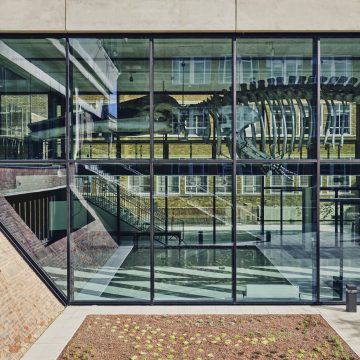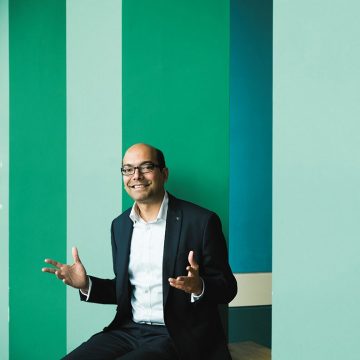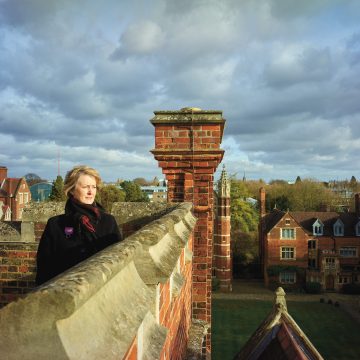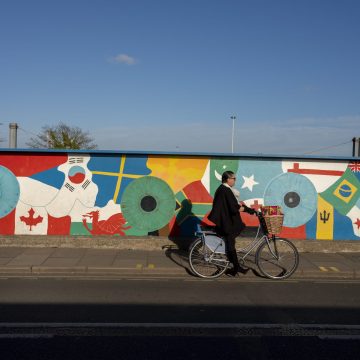When researchers discovered an apparently medieval ‘table top’, the hunt was on to find out more.
Professor Liba Taub examines an equatorium held at the Whipple Museum of the History of Science.
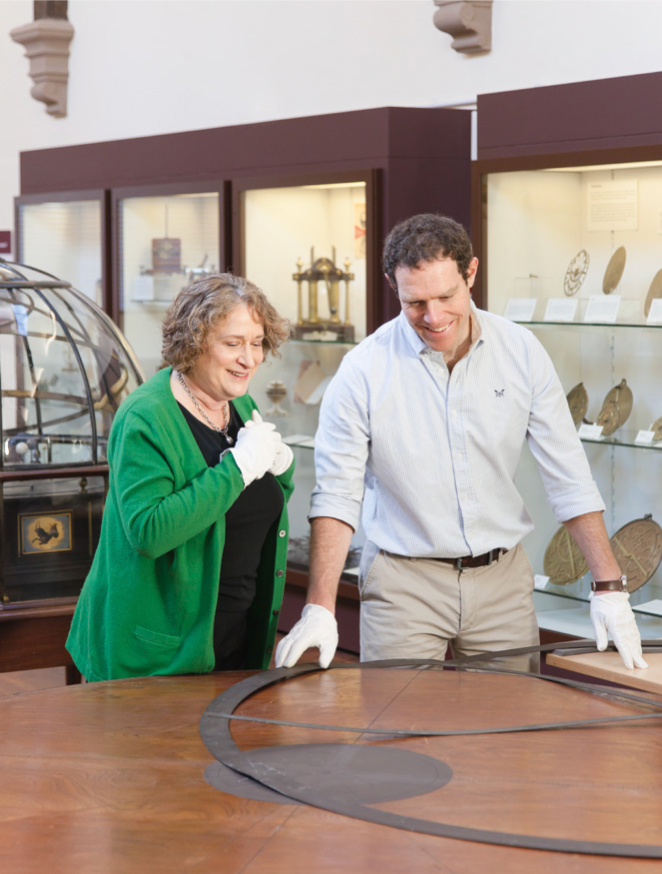
The round wooden thing cluttering up the storeroom at the Whipple Museum of the History of Science was around 6ft in diameter. It sported a large brass ring, dust and scratches. In 1999, when the collection was inventoried, it was nicknamed ‘King Arthur’s Table’ and classified as some kind of astronomical or astrological instrument.
And back into storage it went. Until 2012. Dr Seb Falk, then an MPhil student (now Rosamund Chambers Research Fellow at Girton) was working in the Peterhouse library, researching a medieval manuscript called The Equatorie of the Planetis which an earlier PhD student, Derek de Solla Price had attributed to Geoffrey Chaucer.
The book featured instructions on how to make an astronomical instrument he called an equatorium. Unlike the more familiar astrolabe, which medieval astronomers used to track their position, this rarer instrument was used to calculate the past and future positions of the sun, moon and planets.
So how did this equatorium come to be in the Whipple? And is it medieval? Working with the museum’s staff, Falk was able to demonstrate that the Whipple’s equatorium was commissioned by Solla Price in the 1950s – and constructed by the Cavendish’s lab technicians. Falk also recognised that the Equatorie was by the English Benedictine monk John Westwyk.
Professor Liba Taub, Director of the Museum, says the equatorium touches on many aspects of what the Whipple was intended to be. “The instruments help us understand the texts, and the texts help us understand the instruments.
“As Robert Whipple himself said, the museum should be much more than a well-arranged repository of historic scientific apparatus. It should be a valuable teaching instrument, and a cultural accessory to modern research.”
The Whipple Museum
-
1898
Robert Whipple comes to Cambridge as assistant to Horace Darwin, Charles’s son.
-
1944
Whipple donates scientific instruments and rare books to the University.
-
1959
The collection moves to its permanent home on Free School Lane.
-
1973-75
A library is created for the new Department of History and Philosophy of Science.
-
2019
The Museum celebrates its 75th anniversary as an integral part of the new department.
Objects and Interpretations, the Whipple’s 75th anniversary exhibition (and accompanying book, published by CUP), runs until summer 2020.

